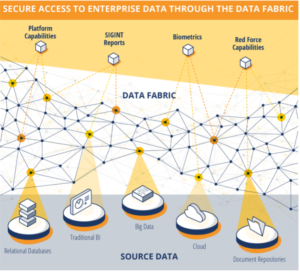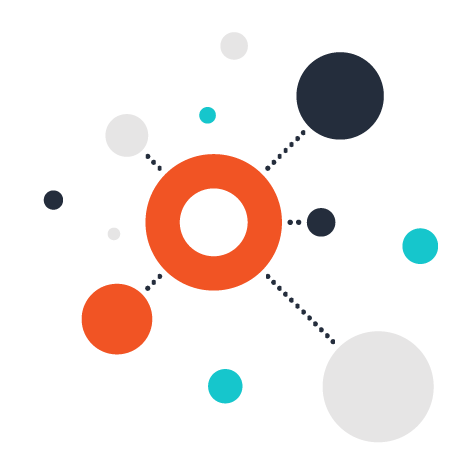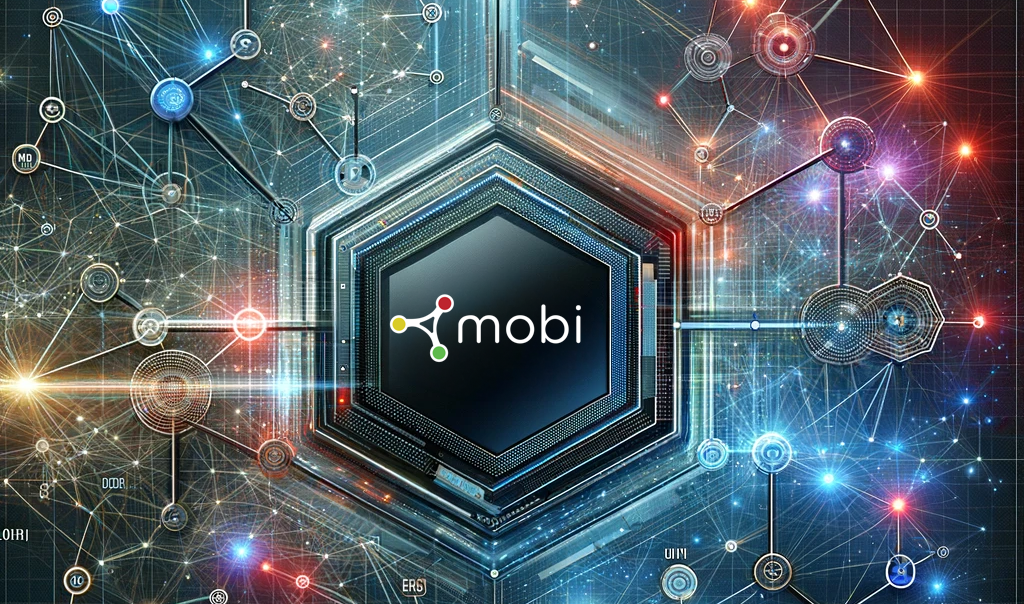Industries Served
In this technology age, the issue of disparate data silos and the need for semantically driven queries across them is pervasive in nearly every industry. As such, the Mobi team has served a wide variety of domains and businesses in encoding accurate descriptions of their enterprises and meeting their unique needs.
Healthcare
In the intricate world of healthcare, data is as vital as the heartbeat. Mobi can support a more robust understanding of the pulse of healthcare data, from the meticulous research and development phases to the attentive eyes of pharmacovigilance and the methodical world of clinical trials. Mobi is a powerful engine for the management of an extensive array of internal and standardized vocabularies such as IDMP (Identification of Medicinal Products) and MedDRA (Medical Dictionary for Regulatory Activities), ensuring that the language spoken across the healthcare spectrum is universal, precise, and understood. By wielding controlled vocabularies (CVs) and ontologies, you can enable a seamless integration of data. This not only empowers stakeholders with enriched, contextual information, but also paves the way for breakthroughs in patient care and safety.
Intentionally Blank DO NOT DELETE
Your content goes here. Edit or remove this text inline or in the module Content settings. You can also style every aspect of this content in the module Design settings and even apply custom CSS to this text in the module Advanced settings.
Product Research & Development
One practical example of utilizing Mobi in support of PR&D in healthcare would be for the management of controlled vocabularies that can be leveraged by NLP systems looking to annotate electronic lab notebook content for more meaningful search and discovery. Utilizing this sort of approach and Mobi to manage semantic artifacts transforms the search and discovery of knowledge within a PR&D corpus, particularly when dealing with unstructured or semi-structured content. Mobi’s sophisticated semantic framework enhances the precision and relevancy of search results, ensuring that researchers can quickly uncover the most pertinent information, thereby accelerating the pace of discovery and innovation in product research and development.
Pharmacovigilance
Detecting, assessing, understanding, and preventing adverse effects related to pharmaceutical products is a complex, nuanced process which inherently requires fusing data from a variety of sources into a practical application. By harnessing the rich, context-aware data models that Mobi facilitates, healthcare professionals can swiftly pinpoint critical signals amid vast datasets, enhancing the accuracy of adverse event reporting and enabling more effective monitoring of patient safety. Leveraging an ecosystem of semantic of artifacts, such as MedDRA, allows for semantic normalization of language into precise types of events being experienced. This harmonization allows for easier classification/prioritization of adverse event reporting, as well as helps massage the variety of input formats into required regulatory formats such as E2B. Leveraging a semantic model can reduce the speed and complexity of aggregating these sources of data into a single, visible, and understandable reporting framework.
Clinical Trial Metadata
Managing the metadata associated with clinical trials is an immense task. Semantic knowledge graphs, as facilitated by Mobi, excel in this environment by managing complex ontologies that represent multifaceted and changing data with precision. Mobi’s ability to underpin a semantic knowledge graph allows for an overlay of complex automation processes vital in regulated environments, ensuring compliance and enhancing efficiency. This semantic approach not only streamlines the management of clinical trials data, but also dynamically adapts to the industry’s evolving standards and practices, setting the stage for a future where data drives progress.
Finance
Semantic knowledge graphs can empower many use cases throughout the world of finance. Trader Surveillance and Fraud Detection are two use concrete use cases where knowledge graph technologies can be a force multiplier.
Intentionally Blank DO NOT DELETE
Your content goes here. Edit or remove this text inline or in the module Content settings. You can also style every aspect of this content in the module Design settings and even apply custom CSS to this text in the module Advanced settings.
Trader Surveillance
A knowledge graph can be a key differentiator in a platform that helps ensure SEC compliance through the monitoring of trader behavior. A knowledge graph that can blend the heterogenous landscape where traders operate into a single plane of understanding allows for a chassis on which this type of use case can drive immense value. Mobi provides the degree of process control and change management necessary for these types of regulated environments.
Fraud Detection
Semantic graph technology can deliver unparalleled advantages through robust data fusion capabilities and comprehensive provenance. By integrating diverse data sources into a coherent semantic framework, Mobi can empower the detection of sophisticated fraud patterns that conventional systems might miss. The iterative and collaborative development of core models, facilitated by Mobi’s advanced DevOps features, ensures continuous refinement and validation of detection mechanisms. This iterative approach not only enhances the accuracy and reliability of fraud detection models, but can also adapt to evolving fraud tactics. Furthermore, Mobi’s emphasis on provenance provides a transparent audit trail, crucial for regulatory compliance and investigative processes. In deploying Mobi in support of fraud detection, financial institutions can significantly reduce their exposure to fraud, safeguarding not just their assets, but also contributing to broader economic stability.
Government
In the multifaceted arena of government operations, Mobi stands out as a transformative tool capable of navigating the complexity and diversity of public sector data. Its application ranges from enhancing Open Source Intelligence (OSINT) for informed decision-making to streamlining large-scale acquisition programs to foster transparency and efficiency. Government enterprises demand an unparalleled level of provenance and accountability, and Mobi delivers by ensuring that data is not only interconnected, but also traceable and reliable. By embedding a semantic layer of intelligence within the fabric of governmental data ecosystems, Mobi enables public institutions to uphold the highest standards of integrity and service to the public.
Intentionally Blank DO NOT DELETE
Your content goes here. Edit or remove this text inline or in the module Content settings. You can also style every aspect of this content in the module Design settings and even apply custom CSS to this text in the module Advanced settings.
Open Source Intelligence
Semantic graph technologies are a natural fit for the realm of OSINT due to the inherent ability to meaningly fuse together heterogeneous types of data. It’s ability to aggregate the insights across a variety of tools and present it as a unified layer that can be flexibly and continuously enhanced allows for greater automation and improved results. Mobi’s innovative versioning and provenance system is tailored to meet the robust security requirements central to government enterprises. It provides a secure foundation for managing the semantic artifacts essential to a semantic layer, ensuring full traceability and controlled evolution of data. This meticulous approach to data stewardship fosters a trusted environment where the integrity of sensitive information is maintained across the entire lifecycle of governmental operations.
Acquisition Processes
Semantic graphs bring unparalleled clarity and connectivity to the complex data involved in large-scale acquisitions, and Mobi can be pivotal in harnessing these benefits. By centralizing disparate data points into an intelligible and interconnected web, Mobi can support acquisition teams with a holistic view of relevant information, streamlining due diligence and strategic decision-making. The semantic layer created by Mobi allows for the seamless integration of financial, operational, and compliance data, enabling a more agile and informed acquisition process. This cohesive approach ensures that critical relationships and dependencies are not only visible, but also actionable, reducing risk and promoting a thorough understanding of the acquisition landscape. With Mobi, organizations can navigate the intricacies of large-scale acquisitions with confidence, backed by a robust platform that excels in the intricate dance of data orchestration.
Mobi-powered SBIR “positioned to save the Air Force an estimated $5 million.”
A Shared Reasoning Environment for the Acquisition Life Cycle; AFSBIRSTR Press Release, September 23, 2021; https://www.afsbirsttr.af.mil/News-Media/Success-Stories/Article/2786105/a-shared-reasoning-environment-for-the-acquisition-life-cycle/
Manufacturing
In the Manufacturing industry, semantic graph technologies introduce an outsized impact, unlocking exceptional value across various use cases, including supply chain management, digital twin/digital thread initiatives, and the broader vision of Industry 4.0. By encapsulating the complexity of manufacturing data into a connected, intuitive semantic framework, Mobi supports a deeper understanding and unprecedented visibility into the supply chain, enabling proactive decision-making and efficiency optimizations. This not only drives innovation and agility, but also fosters collaboration and knowledge sharing across the manufacturing ecosystem, paving the way for smarter, more resilient, and sustainable manufacturing processes.
Intentionally Blank DO NOT DELETE
Your content goes here. Edit or remove this text inline or in the module Content settings. You can also style every aspect of this content in the module Design settings and even apply custom CSS to this text in the module Advanced settings.
Supply Chain Management
In today’s global economy, supply chains are not just interconnected, but also multifaceted and dynamic, with complexity increasing at every turn. This intricate network, composed of suppliers, logistics, production lines, and distribution channels, is naturally suited to representation in semantic graphs. Mobi harnesses this inherent interconnectedness, applying a semantic graph’s structured yet flexible nature to map out and manage the entire supply chain ecosystem. With Mobi, each node and edge in the graph becomes a live, actionable piece of intelligence, representing entities such as inventory levels, supplier relationships, and logistic pathways. This visualization allows for more intuitive oversight, predictive analytics, and real-time response to disruptions, ensuring that supply chains managed by Mobi are not only more resilient, but also aligned with the most stringent efficiency and compliance standards.
Digital Twin / Digital Thread
In the advancing realm of manufacturing and operations, the digitization of engineering methods and operational data has set the stage for a transformative concept: the continuous digital representation of assets throughout their entire lifecycle, from conception to operation. This concept, known as the digital twin/digital thread, has become increasingly attainable and realistic. Mobi, with its semantic graph capabilities, sits at the heart of this revolution, providing a powerful means to weave together the various emerging solutions and standards within this space. By applying a semantic graph, Mobi enables the disparate engineering systems and data formats to communicate and interact, forming a coherent and holistic view. This interconnectedness not only fosters enhanced analytics and decision-making, but also paves the way for innovations in predictive maintenance, optimized operations, and improved product development, solidifying Mobi’s role as an essential capability within the digital twin/digital thread ecosystem.
Industry 4.0
The advent of Industry 4.0 marks a seismic shift in manufacturing, characterized by automation, data exchange, and the Internet of Things (IoT), converging the physical and digital realms of industrial production. This mosaic of data lends itself to a semantic graph-based solution, where seemingly incongruent data can be woven together into a more holistic picture of the manufacturing landscape. Within this complex data tapestry, Mobi offers a robust platform for the nuanced management of semantic artifacts, playing a crucial supporting role in aligning and representing diverse industrial use cases within a semantic graph framework.
Variations on a Theme
Across diverse industries, from healthcare to manufacturing, the core benefits of semantic graph technology shine through, addressing universal challenges of data management and utilization. Key among these benefits is the ability to fuse disparate data modalities, breaking down entrenched data and solution silos, and elegantly representing complex relationships. These capabilities are not confined by industry boundaries, but are instead ubiquitous, underscoring the transformative potential of semantic graphs.
Mobi plays an instrumental role in realizing this potential by providing a sophisticated platform that manages the semantic artifacts at the heart of these solutions. By treating these artifacts with the same rigor as software products, Mobi introduces a new paradigm of visibility, control, and testability. This approach mitigates the risks associated with complexity that, left unchecked, can become crippling to large knowledge graph solutions. Mobi ensures that the rich tapestry of data woven by semantic graphs is not only powerful, but also manageable, paving the way for innovation and intelligent decision-making across sectors.





